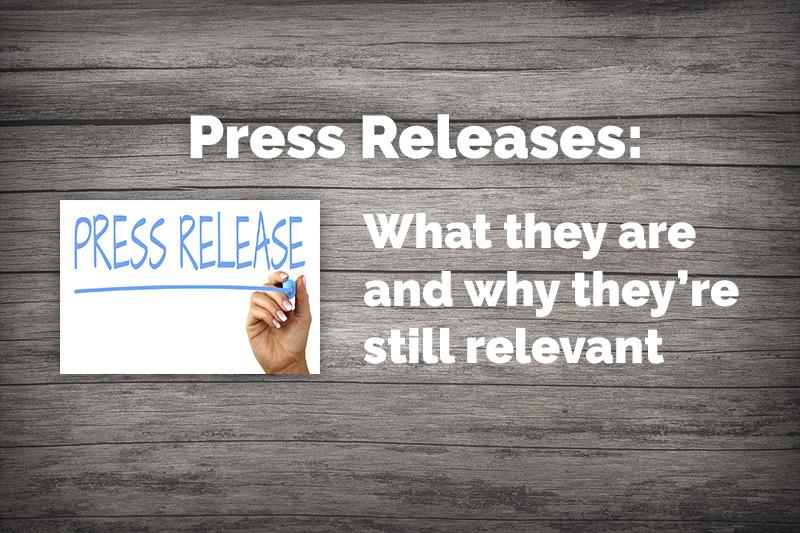
I recently got a request from one of our clients to send out press releases for their new website launch. Usually, I handle the business or programming side of things in our company but in the past, I’ve submitted quite a few releases on various projects. So I accepted this request and found the press release landscape rich with new techniques and opportunities. So I’d like to share my findings and experience.
What’s a Press Release?
At its core, a press release is simply sharing a newsworthy story. Note that not every story is worth a press release and so you need to look at it through the lens of prospective readers – is your story eye-catching and worth reading? Once you have that story, then you submit the story to a press release site and they in turn submit it to various websites and news outlets for journalists to review and possibly include through their channels. Ultimately your goal with a press release is to have it published through news outlets for maximum exposure and reading.
Are Press Releases Still Worth It?
Back when I was submitting regular press releases, I was simply doing it to bump search engine results by increasing backlinks to my sites. That’s not really a thing now since most reputable online news won’t include a backlink – instead, their links are set to ‘no-follow’ to stop the search engine crawlers from continuing to your site and giving you that search engine optimization (SEO) boost. Remember, Google will ignore duplicate articles.
But do press releases still help with SEO? Absolutely, you have to write your press releases more as actual newsworthy stories that people would be actually interested in reading! Instead of looking for backlinks, you’re looking to produce an article that’s worth reading, worth sharing, and worth linking to. Even though the news site won’t include a backlink, you’ll still be getting web traffic from that link as people want to find out more, and as readers find your article, they may mention your article or your website on their blog – and that’s where you do get a backlink.
Also, if you’re including a version of your press release on your own website, that’s additional content for the search engines to pick up.
How To Write a Good Press Release
Gone are the days when you can write a bad-written press release. I guess you could write a bad one but it wouldn’t be worth your time. These days, you need a well-written article that grabs attention and is worth reading.
First off, you need something newsworthy (yes, I keep saying that). In our case, our client launched their new site. Launching a website isn’t news in itself, except to the owners of that site, so you need to make it newsworthy. What does the website launch offer, why would it interest others? In our case, the new website offers all the features of the competitor sites but is easier to use and more affordable. Now we have a story. Other angles could include offering a new product, an noteworthy event, findings from a new study – basically, think about it from a news journalist’s point of view. Is it something worth talking about?
Next, you need to write the press release. A few quick rules out of the gate: make sure your article is in third-person, removing any “I”, “we”, “our”, etc. Also, take out a lot of the fluff and “sales talk” keeping to the news. If you can, don’t include your website name in the headline or the website URL in the lead paragraph. Present the story first and provide your website address later, after the reader is curious. Remember, you don’t want to come off as spammy!
There’s a certain structure that should be followed when writing a release and it’s helpful to imagine a news anchor reading your story. Start with the headline. A headline should be punchy and include a hook or angle to catch the reader’s attention. Next, write a lead paragraph that summarizes your news so the journalist or reader can quickly scan if they want to read the whole article. Then, write the body of your story. Keep it interesting and expand on your lead paragraph. It’s a good idea here to include images or illustrations and to include relevant quotes. Then include a summary that wraps up the story but also relates your news story to the reader so they can take action, or better digest what the story means to them. Lastly, include a link to your website for readers to find out more.
Where to Submit your Press Release
After you’ve written the perfect press release, there’s still the task of submitting it to the different news outlets. It doesn’t make sense to submit your story to each individual one so instead, you’ll be submitting your story to a press release site. They in turn, will gift-wrap your story and submit to various websites and news outlets. The premium press release sites will do a much better job of this but it could be quite costly. There are free options as well but they can be more hassle. I haven’t used all the services out there and there’s probably quite a few that are also good that I don’t mention here.
For the premium press release sites, we used PR Distribution (formerly Press Release Jet) and 1888 Press Release for our recent project. With Press Release Jet, for $99, they’ll submit your PR to the search engines, submit to Google News and Bing News, and give you 25+ guaranteed placements. The submission process was simple but there wasn’t any followup. I didn’t get a login and I didn’t get a report of what was actually done. 1888 Press Release has a free submission service but for $15 you can disable the advertisements and more exposure. Their interface is a bit clunky, and there’s a lot of upsells but is a great value.
Other premium PR sites that looked good were:
- PRWeb, starts at $99
- Newswire, starts at $149
- ReleaseWire, starts at $49
- PR.com, starts at $60
For the Free press releases, we used OpenPR.com, PRLog.org, and NewsWireToday. With the free services, there’s often a clunkier interface and more hoops to jump through but there’s a lot of great services and they’re free. Also, 1888 Press Release, has free submissions as well.
Other free press release options, that looked good include:
Keep in mind with press release submissions, you don’t want to overlap too much. If real journalists are getting your story from multiple sources, they’ll just ignore the extra ones they receive, or could get annoyed. I take the approach of using a paid service to do most of the exposure and then the free services for inclusion within their smaller sphere of influence. Also, for the smaller services, I write a different version so that the search engines won’t ignore the stories.
In Summary
To wrap things up, press releases can still be a great strategy to increase traffic to your site as long as you have a newsworthy story and write it well.
Further Reading
Here’s some additional articles worth the read:

